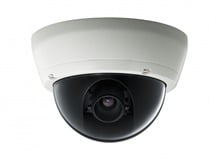Yes, that’s
right. At present there’s no question that most digital surveillance systems
are a local proposition only – despite significant improvements in network
bandwidth worldwide. Clearly there’s a significant and ongoing playoff between
potential performance and cost that hamstrings even the latest installations.
Perhaps hamstring is too strong a word, but there’s no doubt even the latest
systems are not being designed to network globally.
Consider that
majority of installation still use DVRs. Despite the fact that most existing
digital video recording solutions allow video surveillance users to link to DVRs
using a web browser such units are essentially standalone.
It’s true that these
systems do allow DVR manufacturers to build what are essentially network
add-ons that retain many of the elements of older analogue solutions. DVRs can
operate independently in the event of network failure but they can be
cumbersome to operate over networks. For a start they often employ a single
codec that supports one compression protocol (or a proprietary protocol). This
can make it tough to get a DVR operational in an open environment.
A single stream
is not designed to give users the multi-protocol compression engines a fully
networked environment demands. Each protocol has its advantages and protocols
best for local storage are not best for video streaming over networks or the
Internet. All this means a given DVR will be far better at one task than
another. That makes for variable performance characteristics.
Ability to keep
up with changes in compression standards are also important. There are new
standards like H.264 that need to be taken into account when systems are built
and only a handful of systems can manage this.
Comparatively, a
particular advantage of server-based solutions is that instead of being stuck
with the built-in codec, they are able to take advantage of whichever connected
codec is best for the application at hand.
In open
infrastructure environments, server farms could be strategically placed at
points on local and global networks allowing access to video data from a linked
access point at any location. Of course it’s not cut and dried. Servers
designed to support surveillance solutions would need to be more robust than
standard business network servers and there’d be a need for redundancy and
local power system backup. They’d also need thumping storage capacity, massive
comms pipes and and lots of processing power. Is all this really possible at
the current juncture? No it’s probably not, given current surveillance budgets.
Moving forward, a
key is going to be the push to open standards touted by interest groups like
ONVIF. No one can deny that open infrastructure environments are a different
world from the one in which current network-enabled DVRs exist. They’re more
flexible and can offer greater storage redundancy than a DVR. At the same time
they’re also still vulnerable and potentially less reliable.
While reducing
the risks posed by remote server-based CCTV solutions is possible, it would be
forbiddingly expensive in the short term. This means our industry’s future
direction may depend much less on clever technology than it does on senior
management’s ability to rationalise funding security solutions whose comms and
storage requirements are at the pointy end of technological possibility but
whose budgets are a long way behind.
